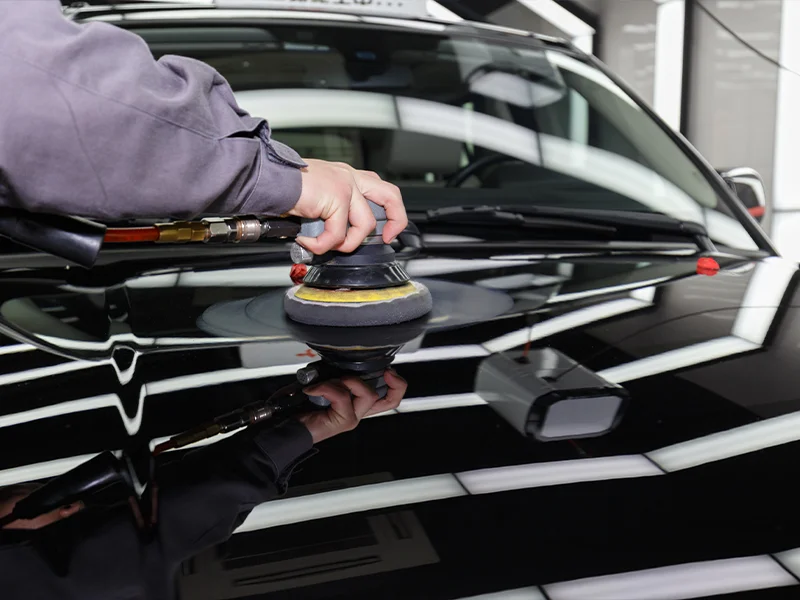Introduction and classification of window film
Release time:
May 17,2024
Author:
Source:
With the continuous development of decoration technology, the variety of film products is also increasing. One of them is called glass window film, which is popular among consumers for its excellent performance and good quality. So, what is glass window film? Next, let me take consumers and friends to have a good understanding of this type of glass window film.

With the continuous development of decoration technology, the variety of film products is also increasing. One of them is called glass window film, which is popular among consumers for its excellent performance and good quality. So, what is glass window film? Next, let me take consumers and friends to have a good understanding of this type of glass window film.
Introduction and classification of glass window films
Glass window film is a multi-layer functionalized polyester composite film material that can be attached to the surface of architectural glass to improve its performance and strength. It has the function of enhancing the bending strength and impact strength of glass. Glass, to prevent personal injury accidents caused by glass breakage and falling off, plays a protective and anti-theft role.
In recent years, glass window film has developed rapidly in China's automotive and construction industries, especially in small cars, where 90% of car owners choose to apply film.
Classification of glass window films:
According to different application fields, glass window films can be roughly divided into three categories: architectural glass window films, automotive glass window films, and safety glass window films.
Architectural glass window film: with the main purpose of energy conservation and insulation, it has UV protection and safety functions. Membranes can also be divided into thermal reflective films and low radiation films. Heat reflective film, applied to the surface of glass, allows visible and near-infrared light to pass through indoors, but cannot pass through far-infrared light. Therefore, with enough light entering the room, most of the solar heat is reflected back, and the indoor temperature does not rise too much in the hot summer, thereby reducing the indoor air conditioning load, saving air conditioning costs, and energy conservation. Low radiation film can penetrate a certain amount of shortwave solar radiation energy, allowing solar radiation heat to enter the room and be absorbed by indoor objects; At the same time, it can retain over 90% of the longwave infrared reflection of indoor object radiation. Low emissivity films fully utilize solar radiation and the longwave radiation energy of indoor objects. Therefore, it can be used in cold areas and heating buildings, playing a role in insulation and energy conservation.
Car window film: applied to the inner surface of car glass, it has energy-saving, heat insulation, UV protection, safety and anti-theft functions. At the same time, there are also high requirements for the visible light transmittance and visible light reflectance of the car window film, especially for the front windshield film. According to the "Technical Conditions for Motor Vehicle Operation Safety", "the visible light transmittance of the front windshield shall not be less than 70%, and all car window glass shall not be coated with mirror reflective sunshade film.". Due to its use on car windshields, the visible light transmittance after film application must be greater than 70% to meet the requirements of the national standard GB7258-2004.
Safety glass window film: There is a strong adhesive layer between the film and the glass, and the film itself has good tear and penetration resistance. Even if it is broken, even if the glass is broken, it can still maintain its original overall state, preventing accidents from causing secondary damage to the human body due to glass breakage and splashing. Its main function is safety and explosion-proof, generally used in important places or exhibition halls such as banks and other financial institutions, jewelry store storefronts, museums, hotel halls, etc. This type of film also has a certain degree of thermal insulation, UV resistance, and high transparency.
In terms of production technology, glass window film can be divided into three categories: dyeing film, primary color film, and vacuum coating. Dyed films can be divided into ordinary films, surface dyed films, and interlayer dyed films; Vacuum coating can be divided into vacuum evaporation coating and magnetron sputtering coating; According to the different coating materials, it can be divided into metal film and ceramic film.
Ordinary film: commonly known as tea paper, is made by mixing dyes in glue and coating it on a polyethylene substrate. It is the oldest production method and is now rarely used due to its lack of insulation, UV free and short shelf life.
Surface dyeing film: It is a type of dye applied to the surface of PET substrate, which has a soft texture and lacks sufficient toughness and explosion-proof properties. It is not resistant to ultraviolet rays, is prone to fading, and has a short shelf life.
Interlayer dyeing film: It is a type of dyeing film that applies dye between two layers of PET substrate, with a very soft texture and certain UV aging resistance. Due to its low cost, this type of dyeing film is still available in the market.
The characteristics of dyeing film: low visible light reflectivity, lack of good thermal control performance, easy fading (usually purple), and easy foaming after long-term use.
Primary color film: refers to glass window film without adding organic dyes. So far, optical grade PET films are only available in gray and colorless polyester films, while PET films in other colors must be dyed to achieve this. The characteristics of the primary color film are good hand feel, not easy to fade, and long shelf life.
Vacuum evaporation coating: By applying thermal evaporation (for pure metals with low melting temperatures) process, various metal, alloy or oxide coatings can be coated on thin films. The vacuum evaporation process usually involves plating pure aluminum, which can be used to produce thin films with different visible light transmittance and reflectivity, giving the films the best sunlight control performance.
Vacuum sputtering coating: Usually in large vacuum chambers and extremely low pressure inert gas environments, various metals or metal composite targets are subjected to the impact of charged ions under the action of electrical energy, resulting in multi-layer dense metal films with characteristics such as low reflection and high reflectivity. Thermal insulation, orderly and uniform coating on the surface of polyester film, and composite technology to produce a variety of unique and stable colors, high level of transparency selectivity, ensuring that the product has sufficient toughness, explosion-proof, thermal insulation, UV resistance of 99%, and a long shelf life.
Ceramic film: a glass window film containing ultra-thin ceramic coatings such as SiO2 and TiO2, without a metal layer, completely without interfering with the GPS satellite navigation system, wireless communication, and mobile phone reception inside the car; At the same time, it does not oxidize or fade, making it easier to maintain than metal film and durable. It has low reflectivity and moderate transmittance. Vigo's amber ceramic film, 3M crystal automotive insulation film, and Johnson&Johnson's basalt series automotive film all belong to this category of products.
Latest developments
Selection and usage steps of window film
May 17,2024
How to identify automotive film
May 17,2024
Types of anti-counterfeiting labels and films
May 17,2024
Copyright ©2024 Guangzhou Broadya New Materials Manufacturing Co., Ltd |
| Powered by www.300.cn | Urban substation | SEO |



